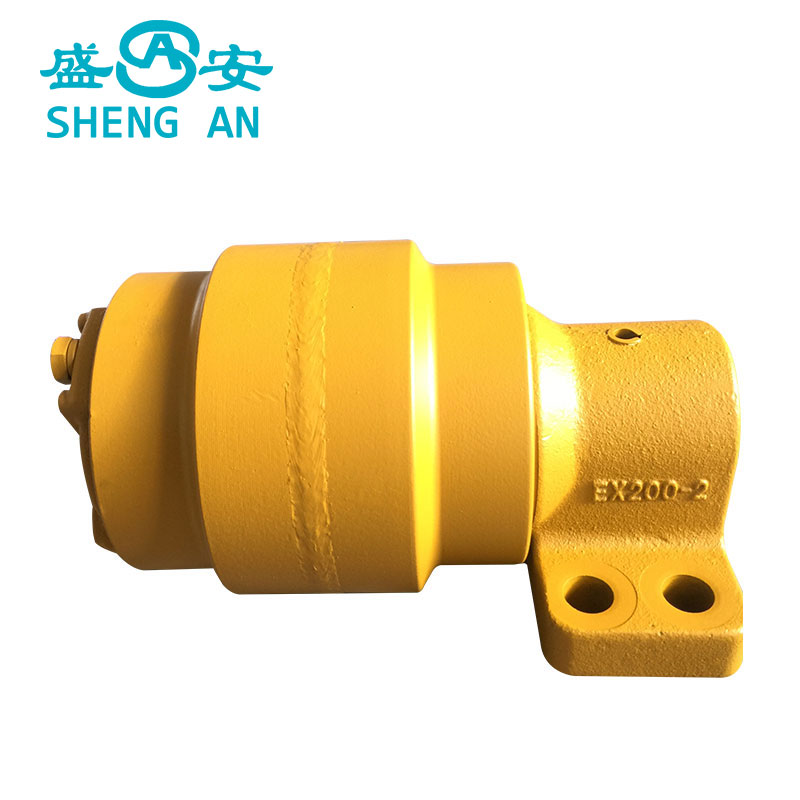Exploring the Composition: Materials Used in Carrier Rollers for Conveyor Systems
2024-03-04
Introduction:
Carrier rollers are integral components of conveyor systems, providing crucial support and guidance for the conveyor belt and the conveyed load. The materials used in the construction of carrier rollers play a significant role in determining their durability, performance, and suitability for various applications. In this blog, we'll delve into the different materials typically used in carrier rollers, exploring their properties, advantages, and considerations for selection.
Common Materials Used in Carrier Rollers:
1. Steel:
- Steel is one of the most widely used materials for carrier rollers due to its strength, durability, and affordability.
- Carbon steel, in particular, is often used for carrier rollers, as it offers excellent load-bearing capacity and resistance to wear and tear.
- Stainless steel is preferred for applications requiring corrosion resistance, such as outdoor or corrosive environments.
2. Polyethylene (PE):
- Polyethylene is a popular choice for carrier rollers, especially in industries where corrosion resistance, lightweight construction, and low friction are essential.
- High-density polyethylene (HDPE) is commonly used for carrier rollers due to its excellent impact resistance, chemical resistance, and ability to withstand harsh environmental conditions.
3. Nylon:
- Nylon is valued for its exceptional strength, abrasion resistance, and self-lubricating properties, making it an ideal material for carrier rollers in heavy-duty applications.
- Nylon carrier rollers offer low friction, smooth operation, and long service life, making them suitable for conveying abrasive or heavy materials.
4. UHMWPE (Ultra-High Molecular Weight Polyethylene):
- UHMWPE is a specialized form of polyethylene known for its ultra-high molecular weight, resulting in superior abrasion resistance, impact strength, and self-lubricating properties.
- UHMWPE carrier rollers are often used in high-wear applications where prolonged service life and reduced maintenance are desired.
5. Composite Materials:
- Composite materials, such as fiberglass-reinforced plastic (FRP) or carbon fiber-reinforced polymer (CFRP), offer a combination of strength, stiffness, and corrosion resistance.
- Composite carrier rollers are lightweight, non-conductive, and resistant to chemicals and environmental degradation, making them suitable for a wide range of industrial applications.
Considerations for Material Selection:
- Load Capacity: Choose materials with sufficient strength and stiffness to support the anticipated load and operating conditions.
- Environmental Conditions: Consider factors such as temperature extremes, moisture, chemicals, and UV exposure when selecting materials for carrier rollers.
- Friction and Wear: Select materials with low friction coefficients and high wear resistance to minimize belt wear and prolong roller lifespan.
- Cost and Lifecycle: Balance upfront costs with long-term durability and maintenance requirements to optimize the lifecycle cost of carrier rollers.
Conclusion:
The materials used in carrier rollers play a critical role in determining their performance, durability, and suitability for various conveyor applications. Whether it's steel for strength and durability, polyethylene for corrosion resistance, or composite materials for a combination of properties, selecting the right material is essential for optimizing conveyor system performance and longevity. By understanding the properties and considerations associated with different materials, businesses can make informed decisions when choosing carrier rollers for their material handling needs.



